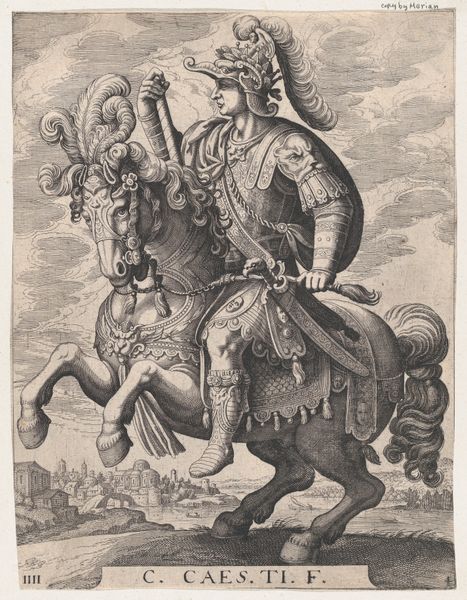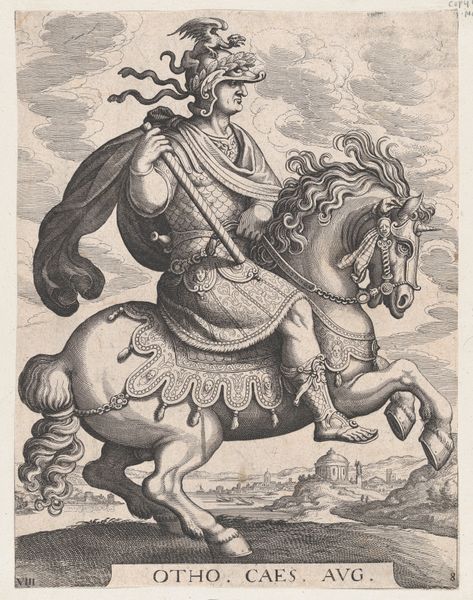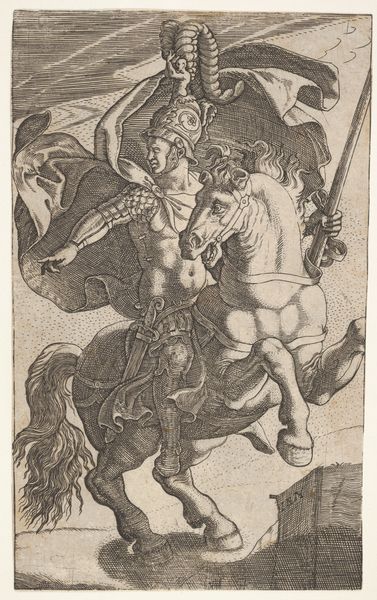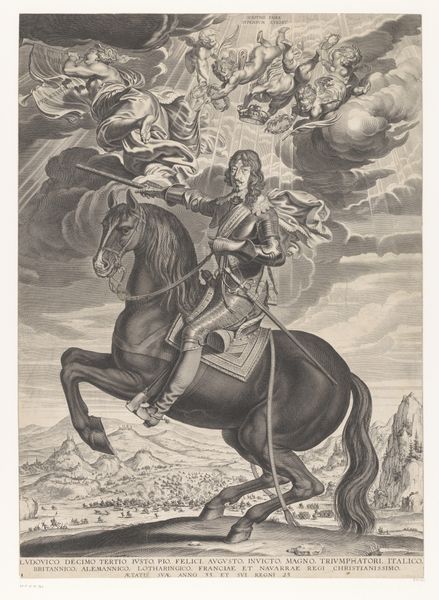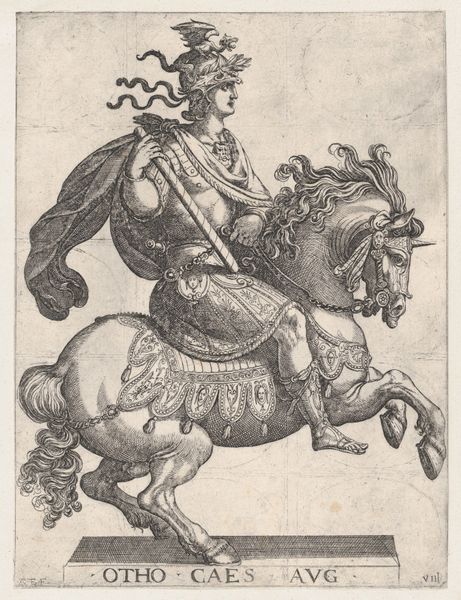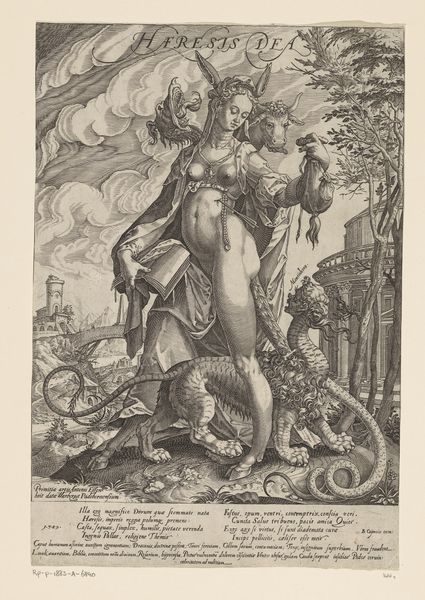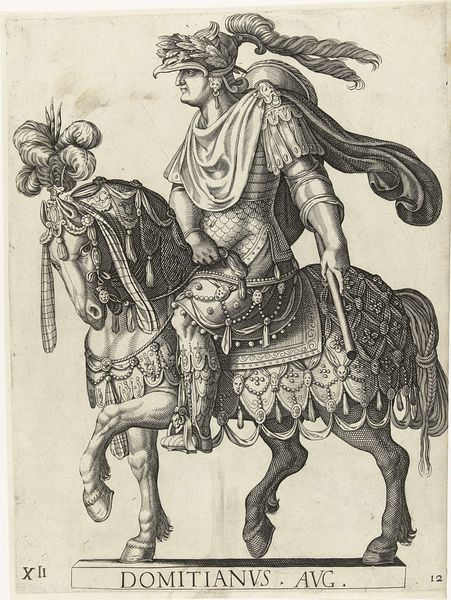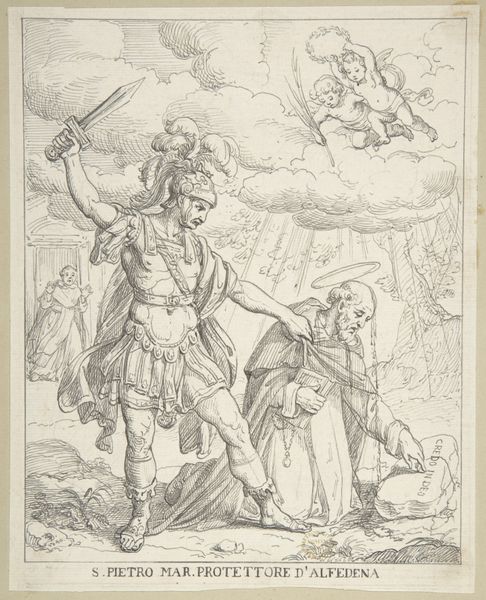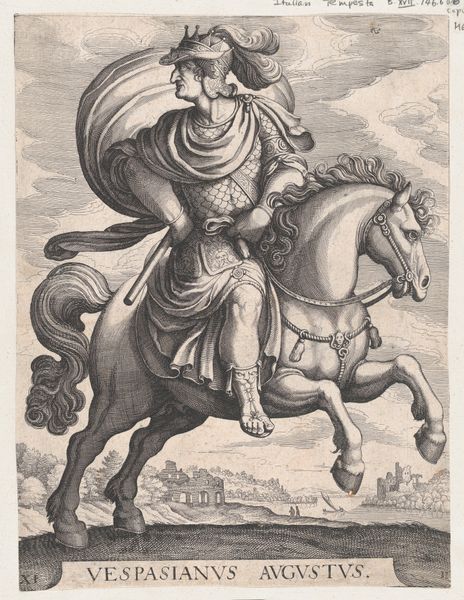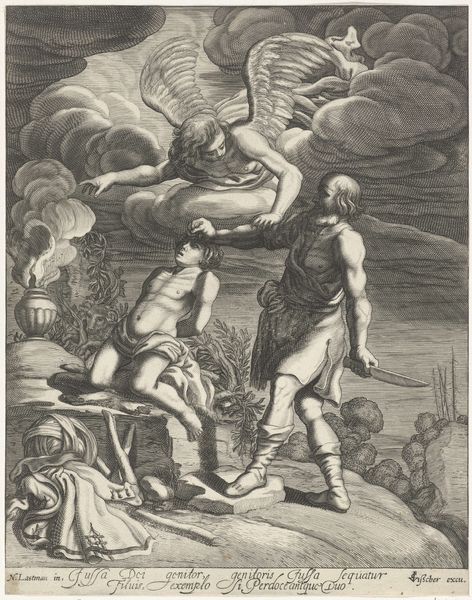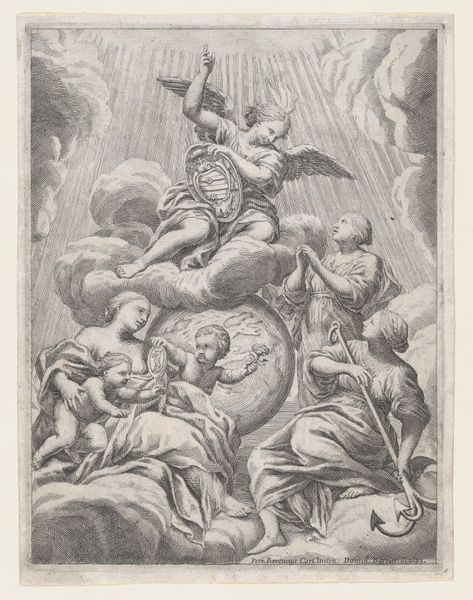
Plate 6: Emperor Nero on Horseback, from 'The First Twelve Roman Caesars', after Tempesta 1610 - 1650
0:00
0:00
drawing, print, engraving
#
portrait
#
drawing
# print
#
caricature
#
romanesque
#
ancient-mediterranean
#
horse
#
surrealism
#
men
#
history-painting
#
engraving
Dimensions: Sheet: 11 13/16 × 8 7/8 in. (30 × 22.6 cm)
Copyright: Public Domain
Editor: Here we have "Plate 6: Emperor Nero on Horseback, from 'The First Twelve Roman Caesars', after Tempesta," an engraving dating from 1610 to 1650 by Matthäus Merian the Elder. It's striking, almost theatrical, with Nero dominating the composition atop this elaborately adorned horse. What formal elements jump out at you? Curator: Immediately, the linear quality. Observe the meticulous, almost obsessive, detail in the rendering of textures: the horse's trappings, Nero's garments, and even the turbulent sky in the background. The artist has used line weight and density to create tonal variation and simulate depth. Note how the horse and rider form a pyramidal shape, stabilizing the composition, with Nero’s gaze directed towards an implied horizon line, guiding our own. Editor: It's interesting how the lines create a sense of movement despite the static nature of the engraving. Do you think the contrast between Nero and the horse helps establish balance? Curator: Precisely. The contrast is key. The horse is almost overwhelmed by its ornamentation, while Nero is rendered with a more simplified, classical form, though not losing texture detail in clothing armor. This interplay directs the eye to Nero's face. In regard to that: Observe his features, idealized yet severe. What impression do you gain? Editor: I guess his face projects strength and power. Does this reflect a Roman ideal? Curator: It evokes, rather than directly reflects. By reducing him to form, proportion and placement in pictorial space we, as viewers, give meaning and assign value. What strikes you about the scale? Editor: That Nero towers above the rest. What I had not understood initially, but now notice more, is that the artist carefully organizes his mark-making and rendering techniques. All contributing toward understanding both content and the structure of the piece itself. Thanks for expanding my perspective on this! Curator: Likewise. This piece encourages an analysis of how visual structure generates its subject position within the artwork.
Comments
No comments
Be the first to comment and join the conversation on the ultimate creative platform.
